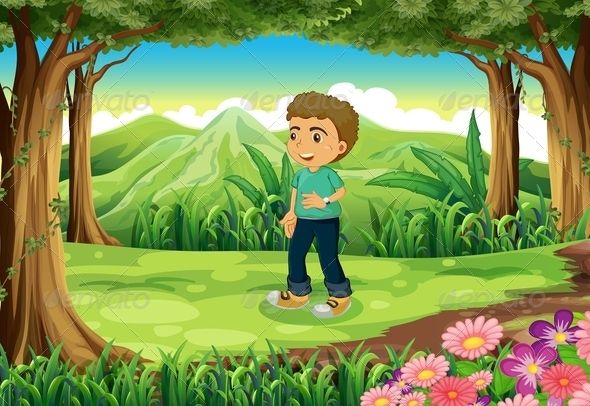Task : Discuss in pairs how forests are useful to us. Later, mention at least two things that forests give us under each category.
a) Food items : fruits, medicine, meat
b) Shelter to animals : den, cave, tree
c) Fuel / other things : firewood, timber, water
Words to Know :
sprinting : running very fast, ವೇಗವಾಗಿ ಓಡು
authority : people who have power, ಅಧಿಕಾರ
complain : express dissatisfaction about something, ದೂರು, ಆಕ್ಷೇಪಣೆಮಾಡು
delighted : happy, ಸಂತೋಷ, ಪರಮಾನಂದ
appreciate : praise, ಪ್ರಶಂಸೆ
community : ಸಮುದಾಯ






The Child Who Saved the Forest











Competency : Numbers
Singular and Plural Noun
Number
A noun which is used for only one person or thing is said to be in the Singular Number.
Example: girl, man, child, pen, table, chair etc.
A noun which is used for more than one person or thing is said to be in the Plural Number.
Example: girls, men, children, pens tables, chairs etc.
Rules Of Forming The Plural Of Nouns
Rule 1 : Most Singular Nouns form their Plurals by adding – ‘s.’
Example :

Rule 2 : Nouns that ends in –s, -ss, -x, -sh, or –ch form their Plurals by adding –es to the Singular
Example :

Rule 3 : Noun that ends in –y, and the –y has a consonant before it, its Plural is formed by changing –y into –ies; as,
Example :

Rule 4 : But if the Noun ends in –y, and the –y has a vowel before it, its Plural is formed by adding –s to the Singular
Example :

Rule 5 : Noun that ends in –f or –fe form their Plurals by changing –f or –fe into –ves
Example:

But the following Nouns form their Plurals by simply adding –s to the Singular
Example :

Rule 6 : Nouns that ends in –o, if they have a consonant before them, generally form their Plurals by adding –es to the Singular

Rule 7 : The following Nouns form their Plurals by a change of the inside vowel
Example:

Rule 8 : The following Nouns form their Plurals in –en or –ren
Example:

Rule 9 : Compound Noun and their Plurals
Example:

Rule 10 : The following Nouns have the same form for the Plural as for the Singular.
Example:

Rule 11 : The following Nouns are always Singular:
Example:

Rule 12 : The following Nouns are always Plural:
Example:

Rule 13 : When the subject changes from Singular to Plural the Predicate of the sentence must change too.
Example:


At the beginning, I was still puzzled. Since I read your article, I have been very impressed. It has provided a lot of innovative ideas for my thesis related to gate.io. Thank u. But I still have some doubts, can you help me? Thanks.